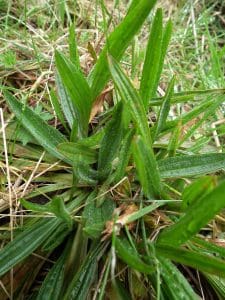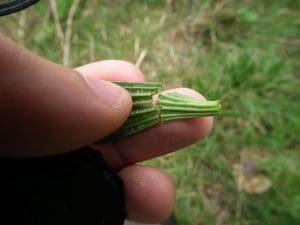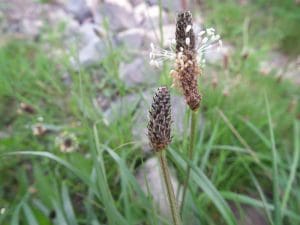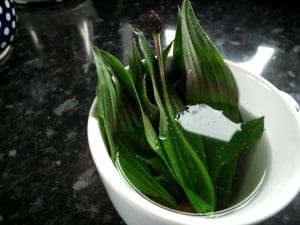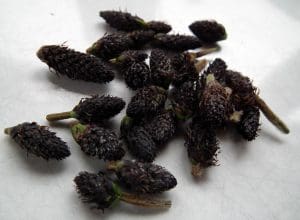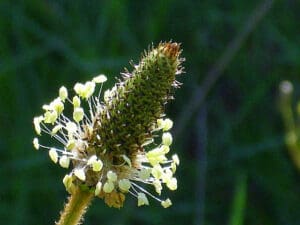Ribwort Plantain / Spring / Summer / Autumn / Edible
Common Names
Narrowleaf plantain, English plantain, Buckhorn plantain, ribleaf, lamb’s tongue.
Botanical Name
Plantago lanceolata
Scientific Classification
Kingdom – Plantae
Order –Rosales
Family – Rosaeae
Physical Characteristics for Ribwort Plantain
The plant is a rosette-forming perennial herb, with leafless, silky, hairy flower stems.
Leaves
The basal leaves are lanceolate spreading or erect, scarcely toothed with 3-5 strong parallel veins narrowed to short petiole. If you very gently pull the leaf apart, sometimes the ‘Strings’ inside each vein will stay intact.
Flowers
Stalk deeply furrowed, ending in an ovoid inflorescence of many small flowers each with a pointed bract. Flowers 4 millimetres (0.16 in) (calyx green, corolla brownish), 4 bent back lobes with brown midribs, long white stamens.
Seeds
Each flower can produce up to two hundred brown seeds.
Habitat
Europe, including Britain, from Iceland South and East to Spain, Northern and Central Asia. It has been naturalised in many other parts of the world. Grassland, roadsides etc, a common weed of lawns and cultivated ground, on neutral and basic soils.
Known Hazards
There are no known hazards, however there is not enough reliable evidence this plant is safe to take orally during pregnancy.
Could be Confused with
Other members of the Plantain family, such as Broadleaved Plantain (Plantago major), but are all edible and have similar uses.
Edible Uses
Young leaves – raw or cooked. They are rather bitter and very tedious to prepare, the fibrous strands are best removed prior to eating. The very young leaves are somewhat better and are less fibrous.
Seed – cooked. Used like sago. The seed can be ground into a powder and added to flours when making bread, cakes or whatever. The leaves and seed heads taste of mushroom, and can be boiled up to make a nice mushroom stock.
Leaves come up from March, but can be hard to spot when so young. Flower from Apr to August. Seeds ripen from Jun to September.
Notes on Herbal Uses
Ribwort Plantain is a safe and effective treatment for bleeding, it quickly staunches blood flow and encourages the repair of damaged tissue. The leaves contain mucilage, tannin and silic acid. An extract of them has antibacterial properties. They have a bitter flavour and are astringent, demulcent, mildly expectorant, haemostatic and ophthalmic. Internally, they are used in the treatment of a wide range of complaints including diarrhoea, gastritis, peptic ulcers, irritable bowel syndrome, haemorrhage, haemorrhoids, cystitis, bronchitis, catarrh, sinusitis, asthma and hay fever. They are used externally in treating skin inflammations, malignant ulcers, cuts, stings etc. The heated leaves are used as a wet dressing for wounds, swellings etc. The root is a remedy for the bite of rattlesnakes, it is used in equal portions with Marrubium vulgare. The seeds are used in the treatment of parasitic worms. Plantain seeds contain up to 30% mucilage which swells up in the gut, acting as a bulk laxative and soothing irritated membranes. Sometimes the seed husks are used without the seeds. A distilled water made from the plant makes an excellent eye lotion.



